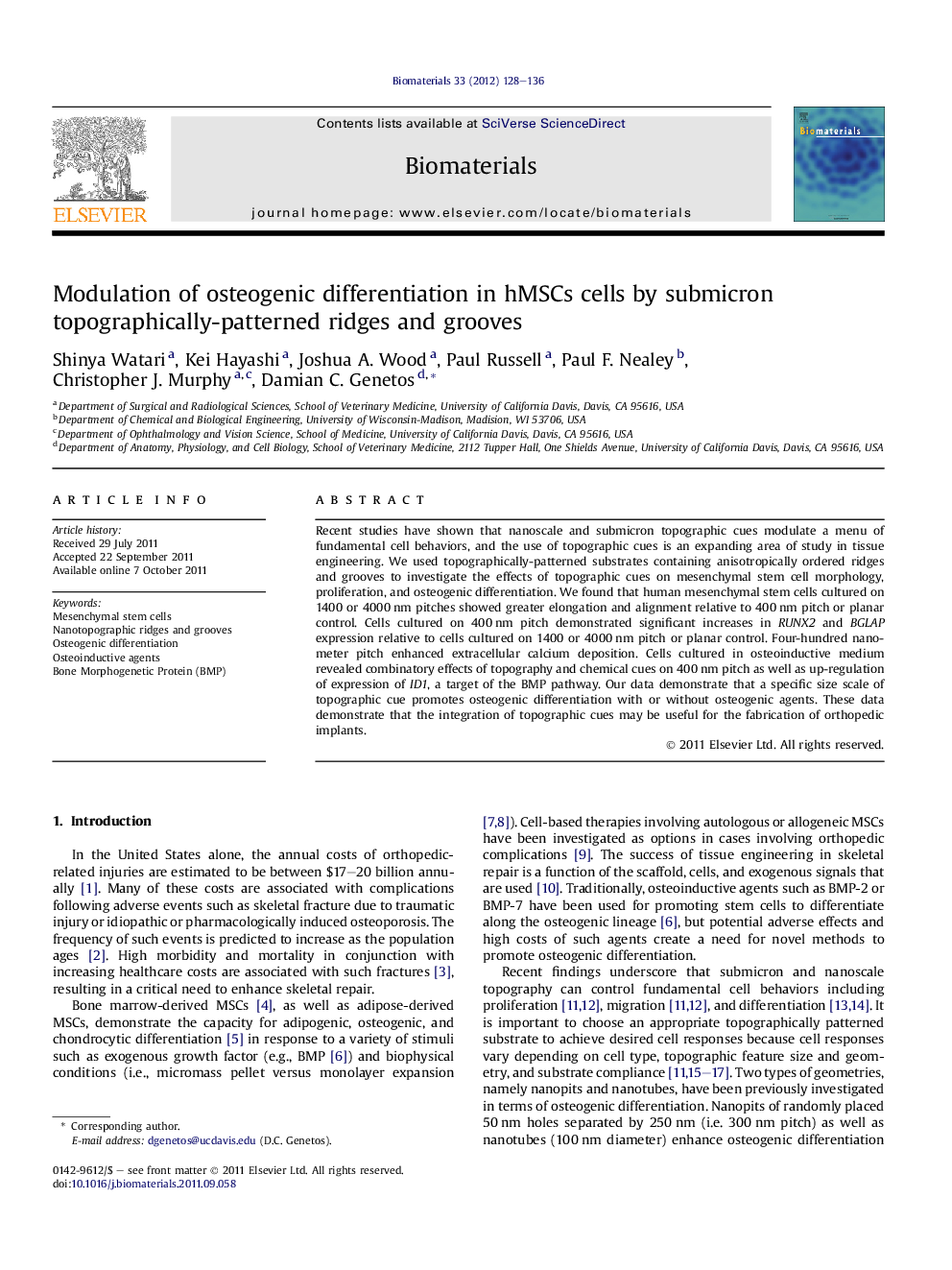| Article ID | Journal | Published Year | Pages | File Type |
|---|---|---|---|---|
| 7761 | Biomaterials | 2012 | 9 Pages |
Recent studies have shown that nanoscale and submicron topographic cues modulate a menu of fundamental cell behaviors, and the use of topographic cues is an expanding area of study in tissue engineering. We used topographically-patterned substrates containing anisotropically ordered ridges and grooves to investigate the effects of topographic cues on mesenchymal stem cell morphology, proliferation, and osteogenic differentiation. We found that human mesenchymal stem cells cultured on 1400 or 4000 nm pitches showed greater elongation and alignment relative to 400 nm pitch or planar control. Cells cultured on 400 nm pitch demonstrated significant increases in RUNX2 and BGLAP expression relative to cells cultured on 1400 or 4000 nm pitch or planar control. Four-hundred nanometer pitch enhanced extracellular calcium deposition. Cells cultured in osteoinductive medium revealed combinatory effects of topography and chemical cues on 400 nm pitch as well as up-regulation of expression of ID1, a target of the BMP pathway. Our data demonstrate that a specific size scale of topographic cue promotes osteogenic differentiation with or without osteogenic agents. These data demonstrate that the integration of topographic cues may be useful for the fabrication of orthopedic implants.
